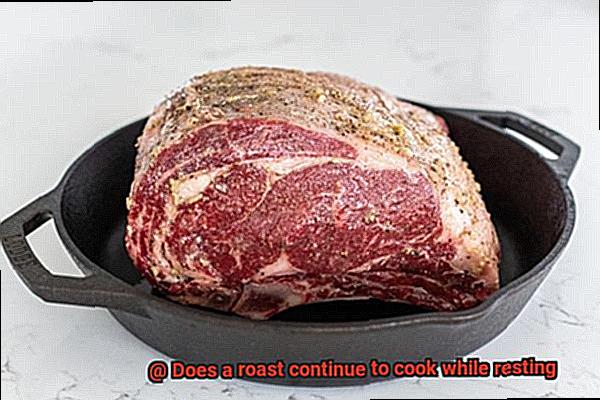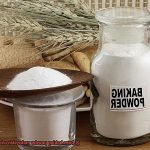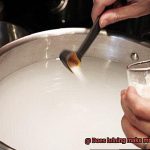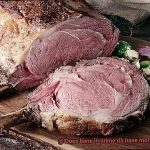Are you tired of serving up dry, overcooked roasts to your dinner guests? If so, you’re not alone. Luckily, there’s a simple solution that can make all the difference: letting your roast rest before carving. But is it just an old wives’ tale or is there some scientific truth to it?
Resting a roast is crucial because while it’s cooking in the oven, the intense heat causes the meat fibers to contract and become tough. By allowing it to rest once removed from the heat, you give those fibers a chance to relax and reabsorb some of the juices lost during cooking – resulting in a juicier and more tender roast.
But what about the question of whether a roast continues to cook while resting? The answer is yes, but don’t panic – it’s not enough to cause overcooking. In fact, removing your roast from the oven when it’s slightly below your desired level of doneness allows for a bit of extra cooking time as it rests.
So next time you’re preparing a roast, remember this: resting isn’t just an optional step – it’s essential for achieving that perfect juicy and tender result. And if anyone questions why you’re taking extra time before carving, just tell them you’re following science-backed advice. Trust us – your taste buds (and dinner guests) will thank you.
Contents
How Meat Cooks
Cooking meat to perfection is a skill that requires an understanding of how meat cooks. Meat is a complex structure consisting of muscle fibers, connective tissues, and fat. These components all react differently to heat, affecting the texture and flavor of the meat.
When heat is applied to meat, the proteins denature, which causes them to change shape and texture. As the temperature increases, the muscle fibers contract and squeeze out moisture, resulting in a loss of juiciness. This is why it’s essential to choose the right cooking method for each cut of meat.
Slow-cooking methods like braising or smoking can break down connective tissue and result in tender, falling-off-the-bone meat. The fat in meat plays a crucial role in flavor and texture. As it heats up, it melts and spreads throughout the meat, adding moisture and richness. Marbling- or the distribution of fat throughout the meat- can make a significant difference in flavor and tenderness.
When roasting meat, it’s important to consider how different components will react to heat. Lean cuts like sirloin roast cook quickly and can easily become dry if overcooked. Fatty cuts like ribeye roast take longer to cook but result in a juicier final product. Roasting involves cooking the meat at high temperatures for a short period before reducing the heat to finish cooking. Resting the meat after cooking is also crucial for achieving optimal results.
During cooking, muscle fibers contract and squeeze out moisture. Resting allows the fibers to relax and reabsorb some of that moisture, resulting in a juicier final product. But here’s the catch; even after removing it from the oven or grill, residual heat within the meat will continue to cook it for several minutes. That’s why it’s critical to remove the roast from the heat source before it reaches the desired internal temperature.
In summary, understanding how meat cooks is essential for achieving perfect results when roasting. Here are some key takeaways to keep in mind:
- Different cuts of meat will react differently to heat.
- Resting the meat after cooking is crucial for retaining moisture and tenderness.
- Residual heat within the meat will continue to cook it for several minutes after removing it from the heat source.
- Careful temperature monitoring and timing can ensure that your roast comes out delicious and juicy every time.
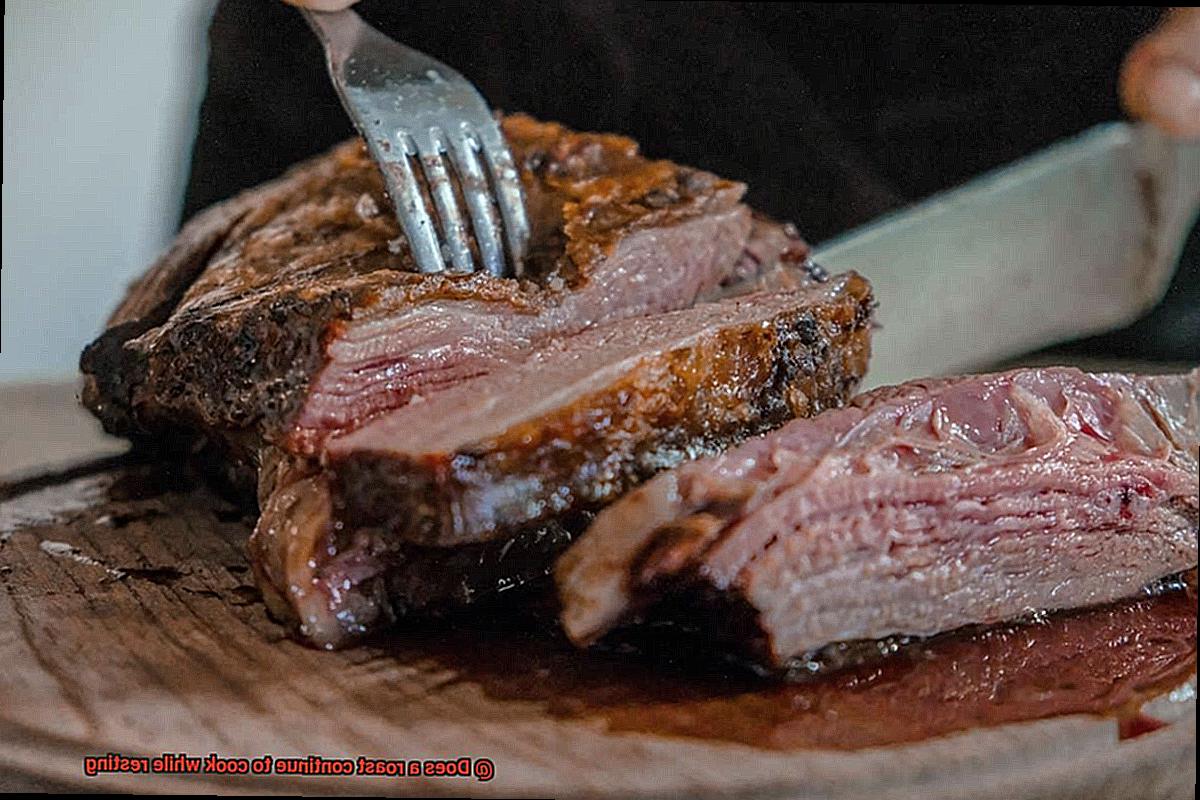
Residual Heat and Roasting
Roasting meat is an art that requires precision and understanding of residual heat. Residual heat is the heat that remains in food after it has been removed from a heat source. When it comes to roasting meat, residual heat can play a significant role in the final temperature and texture of the meat.
The amount of residual heat in meat varies depending on several factors, including the size and shape of the meat, oven temperature, and cooking duration. For instance, larger cuts of meat retain more residual heat than smaller ones, and higher oven temperatures result in more residual heat being retained. Therefore, it’s essential to consider residual heat when roasting meat to achieve perfect results every time.
To achieve the perfect roast, here are some tips to keep in mind:
- Preheat your oven to the proper temperature: Preheating your oven ensures even cooking without any hot or cold spots.
- Use a thermometer: A high-quality meat thermometer is essential to cook your meat to your desired internal temperature accurately.
- Account for residual heat: To avoid overcooking your roast, remove it from the oven slightly below your desired internal temperature as residual heat can cause the meat to continue cooking.
- Let it rest: Resting your meat for at least 10-15 minutes allows the juices to redistribute throughout the meat. This results in a succulent and juicy roast that will leave your taste buds wanting more.
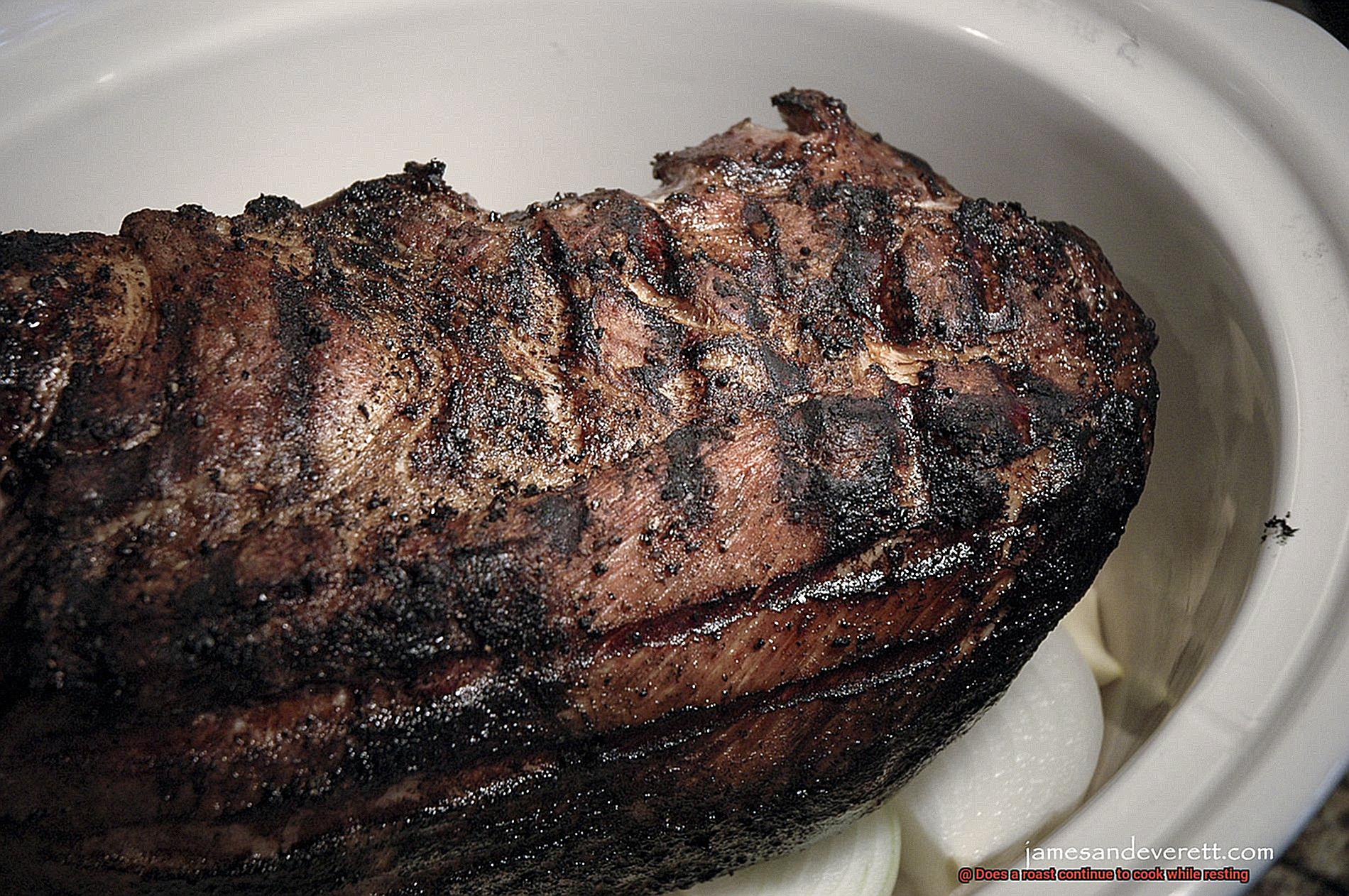
Temperature Fluctuations During Resting Period
Today we’re exploring the fascinating world of roast temperature fluctuations during the resting period. A perfectly cooked roast is the centerpiece of a great meal, but it can be ruined by overcooking or dryness caused by carryover cooking. So, let’s dive into some tips to prevent this and ensure that your next roast is cooked to perfection.
Carryover cooking occurs when the residual heat inside the roast continues to cook it even after it’s been removed from the oven. This can cause the internal temperature to rise several degrees and result in overcooked and dry meat.
To prevent this, it’s important to understand how factors like size, thickness, cooking method, and oven temperature can affect carryover cooking. A larger roast will retain more heat and continue to cook for longer than a smaller one.
To avoid overcooking during the resting period, remove the roast from the heat source when it’s a few degrees below the desired internal temperature. This allows for carryover cooking to bring it up to the correct temperature without overcooking it.
If you’re cooking a roast with a high fat content like prime rib, adjust your resting time accordingly. The fat will continue to melt during resting and cause additional carryover cooking that can make your meat overdone.
Remember, planning is key. Factor in carryover cooking when planning your cooking and resting times for your roast. By doing so, you can ensure that it’s cooked to perfection without being overdone.
The Importance of Resting the Roast
When it comes to cooking a roast, it’s not just about the preparation and cooking time – resting your roast is just as crucial. Resting is the process of letting the roast sit for a period of time after it has been removed from the oven or grill. This step may seem insignificant, but it can make all the difference in achieving a perfectly cooked and delicious meal.
Here’s why resting your roast is so important:
- Even Cooking: Resting allows the internal temperature of the roast to even out, resulting in a roast that is cooked evenly throughout. This means that the heat that was concentrated on the outer edges during cooking will distribute throughout the meat.
- Juiciness: Resting allows for the juices inside the roast to redistribute throughout the meat, resulting in a tender and juicy end result. Without resting, those precious juices would be lost when cutting into the meat, leaving you with a dry and tough piece of meat.
- Optimal Flavor: Resting allows for the flavors in the roast to develop and intensify. This means that you will be able to fully enjoy all of the delicious flavors that you worked so hard to infuse into your roast.
But how long should you allow your roast to rest? The general rule of thumb is to let it sit for about 15-20 minutes per pound before carving. Although this may seem like an eternity when your mouth is watering and your stomach is growling, trust us – it’s worth it.
Some common misconceptions about resting your roast are that it will get cold or that it won’t continue cooking. However, residual heat within the roast will continue to cook it for a short period of time, usually about 5-10 minutes depending on the size of the roast. So don’t worry about serving up a cold meal – just let your roast rest and continue cooking while maintaining its warmth.
Factors Affecting Resting Period Temperature
Calling all foodies. Have you ever wondered why your roast didn’t turn out as tender and juicy as you hoped? Well, one of the most crucial factors affecting the resting period temperature of your roast could be the size of the meat. A larger roast takes longer to reach its desired internal temperature, which means it requires more time to rest before being served. So, if you’re cooking for a crowd, make sure to factor in extra resting time.
Another significant factor is cooking temperature. If you cook your roast at a high temperature, it will trap more heat inside, increasing its internal temperature. As a result, it will require more time to rest before serving. To achieve your desired internal temperature, you need to monitor your cooking temperature closely and adjust it as necessary.
The type of meat being cooked also plays a crucial role in determining the resting period temperature. Different meats have varying densities and moisture levels that affect how they retain heat. For example, leaner cuts such as beef tenderloin lose heat more quickly than fattier cuts like brisket. Consequently, leaner cuts require less time to rest than fattier ones.
Lastly, the length of cooking time affects the resting period temperature of a roast. The longer the roast cooks, the higher its internal temperature will be, which means it requires more time to rest before serving.
Juices Redistribution During Resting Period
Then get ready to explore the fascinating world of juices redistribution during resting periods.
When meat is cooked, the heat causes its juices to flow towards the surface. However, by allowing the meat to rest for a few minutes before carving, those flavorful juices have time to redistribute throughout the meat. This process is a critical aspect of cooking that can make or break the end product. A juicy and succulent roast or steak is the ultimate goal, and resting your meat can help you achieve it.
But here’s something to keep in mind: while resting, your meat continues to cook. The duration of this additional cooking depends on factors like how hot it was when removed from heat and how long you let it rest. So, monitoring your resting time is crucial to avoid overcooking.
To put it into perspective, imagine you remove a roast from the oven when it reaches 145°F in temperature. If you allow it to rest for fifteen minutes, its internal temperature may increase by a few degrees. On the other hand, leaving it to rest for an hour or more could result in an overcooked and dry meal.
Carving a Roast Immediately After Removal from Heat
Did you know that the resting period after cooking is just as critical as the cooking process itself? That’s right – if you want to take your roast game to the next level, you need to pay close attention to the resting period.
When it comes to carving your roast immediately after removal from heat, it’s important to exercise patience. It may be tempting to dive right in and cut into that beautiful piece of meat, but trust me, waiting at least 10-15 minutes before carving is essential. By allowing your roast to rest, you give the juices time to redistribute throughout the meat, resulting in a more tender and flavorful result.
Now, let’s talk about why removing your roast from heat isn’t the end of its cooking journey. When a roast is removed from the heat source, it continues to cook due to carryover cooking. This means that the internal temperature will continue to rise for several minutes while resting. Taking this into account when determining the final internal temperature of your roast can help you achieve the perfect level of doneness without overcooking.
Factors such as the size and shape of your roast, as well as how long it was cooked and at what temperature, will impact how much carryover cooking occurs. However, on average, you can expect an increase in internal temperature of 5-10 degrees Fahrenheit during the resting period.
So why is allowing your roast to rest so crucial? Firstly, it prevents those succulent juices from escaping when you cut into the meat too soon. By waiting just a few minutes, those flavorful juices have time to redistribute throughout the roast, resulting in a more delicious final product.
Secondly, resting your roast allows for more even cooking. While cooking, heat causes the juices in the meat to flow towards the surface. Allowing your roast to rest gives those juices time to redistribute throughout the meat, resulting in a more evenly cooked roast.
Conclusion
In conclusion, resting a roast is not just a myth but an essential step in achieving the perfect juicy and tender result. Science proves that as meat cooks, proteins denature, causing them to change texture and shape. The higher the temperature, the more muscle fibers contract and release moisture, resulting in dryness.
Resting allows those fibers to relax and reabsorb some of the lost moisture, resulting in a succulent final product. However, residual heat can play a significant role in overcooking during the resting period. To avoid this, remove the roast from the heat source when it’s slightly below your desired internal temperature.
Factors such as size, thickness, cooking method, oven temperature, and length of cooking time can affect carryover cooking and resting period temperature. For larger roasts or fatty cuts like prime rib, adjust your resting time accordingly.
Resting your roast ensures even cooking while allowing optimal flavor development and redistributing juices throughout the meat. So remember that resting isn’t just an optional step – it’s crucial for achieving that perfect juicy and tender result.

